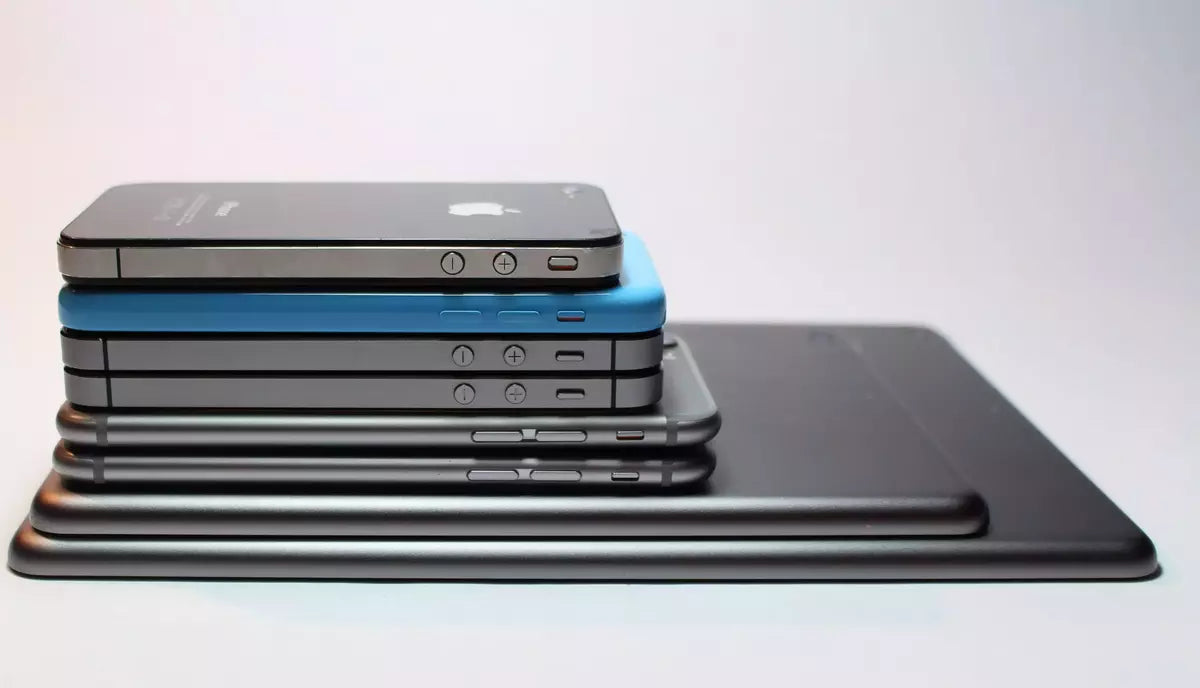At Armodilo, we believe that the best tablet kiosks elevate in-person experiences no matter what technology lies inside. No matter the industry or use case, seamless tablet integration is about redefining user interaction, which is why we always love it when our customers reach out to us to ask questions about how to add value to their retail/POS, healthcare, trade show or hospitality environments.
But that still leaves you with the most important question: "Which tablet do I choose, and why?" Below, check out our top 5 tablets for elevated kiosks, and some tips for deciding which is best for your business.
1. Apple iPad: Elevated Aesthetics and Functionality
| Values | Considerations | |
| Impeccable design, retina display brilliance, and a robust app ecosystem. | Compatibility: Ensure compatibility with non-iOS applications if needed. | Aesthetics: Apple's commitment to design excellence ensures a visually stunning kiosk experience. |
2. Samsung Galaxy Tab: Powering Interaction with Vibrancy
| Values | Considerations | |
| Unmatched processing power, vibrant AMOLED display, and S Pen versatility. | Power Consumption: Higher power consumption may impact battery life in prolonged usage scenarios. | Visual Impact: The vivid display enhances the visual impact of your digital interface. |
3. Microsoft Surface: Unleashing Versatility
| Values | Considerations | |
| Full Windows compatibility, detachable keyboard, and pen support for creative applications. | Processing Power: Surface Pro's processing power may lead to increased internal temperatures, necessitating additional ventilation. |
Productivity: Ideal for productivity-focused applications, offering versatility with detachable accessories. |
4. Lenovo Tab: Affordable Excellence
| Values | Considerations | |
| Budget-friendly with a solid build, extended battery life, and reliable performance. | Balance: Strikes a balance between affordability and functionality, but does not excel. | Processing Power: Consider device processing power based on specific use cases. |
5. Google Pixel Slate: Versatility with Sleek Design
| Values | Considerations | |
| Sleek design, Chrome OS versatility, and compatibility with a detachable keyboard. | Cloud-Based Applications: Pixel Slate's Chrome OS is ideal for cloud-based applications, but less so for local applications. | Compatibility: Compatibility with intended software suite may need to be tested prior to deployment. |
All that said, once you've narrowed down your choices, there are only a few major considerations for deploying tablet kiosks, depending on your use case.
| Feature | Considerations |
| Battery life |
|
| Display Brightness |
|
| Screen Size |
|
| Cable Management |
|
| IP Rating |
|
The right choice of tablet helps your brand deliver more seamless and impactful interactive experiences. Because each tablet make and model brings its own unique strengths and considerations, ensuring that your chosen device aligns perfectly with the intended application is essential.
If you're having trouble making your decision, get in touch with us. We can help ensure your tablet kiosk deployment goes smoothly.



